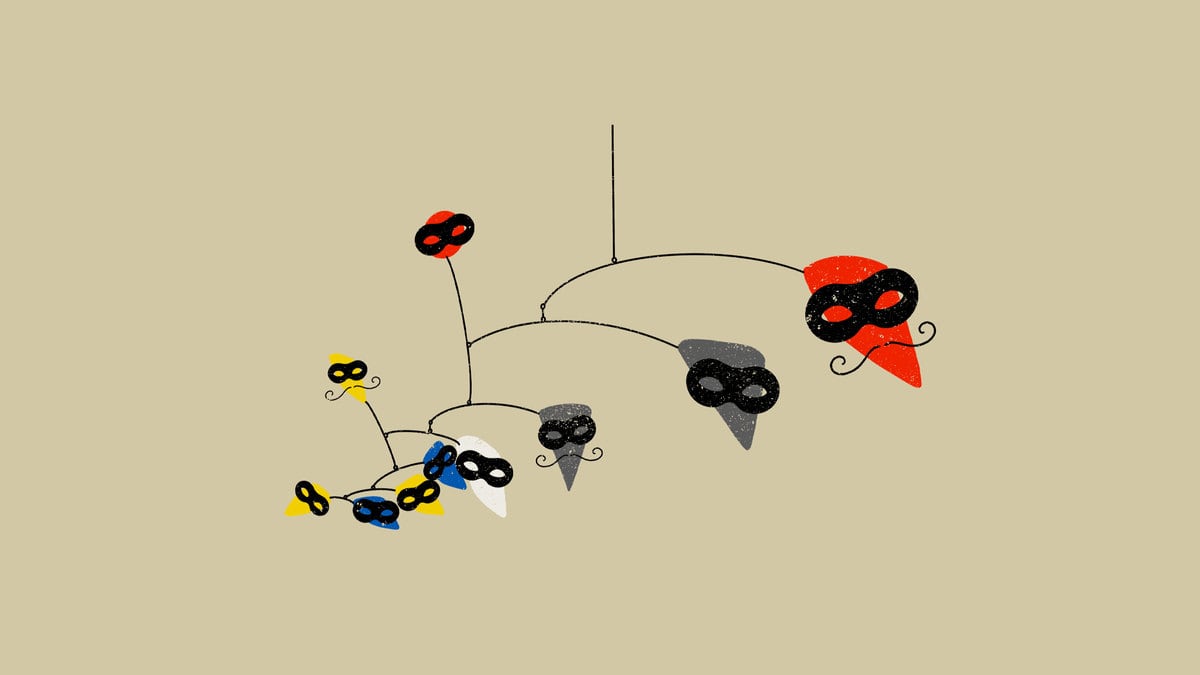A prominent New York art gallerist is battling with a famed art detective and the granddaughter of a Swiss architect over who is the true owner of a $8.7 million Alexander Calder sculpture—a dispute that has spawned allegations of theft, stalking, and dueling lawsuits.
The gallerist, Edward Nahem, claims in a lawsuit filed this week that he purchased the Calder—a 1950 “Mobile de Bretagne”—from French dealer and “art detective” Elisabeth Royer Grimblat in 2017. Nahem is the owner of an eponymous art gallery on Madison Avenue, and has been hailed as a “fixture of the New York gallery scene” known for showing major 20th century artists like Joan Miró, Jean-Michel Basquiat, and Pablo Picasso. Royer Grimblat, meanwhile, is a well-known Parisian art dealer who made a name for herself hunting down priceless artworks stolen by the Nazis in the Holocaust. Her personal collection also includes work by Picasso, Alberto Giacometti and John Constable, according to Departures.
Nahem’s lawsuit contends that Royer Grimblat introduced herself in 2017 as an agent for the owner of the Calder piece, whose family was close friends with the artist. But shortly after Nahem bought it, he alleges, the owner’s daughter claimed her mother never agreed to sell the piece and that her sisters had conspired with Royer Grimblat to steal it. The lawsuit alleges the daughter—Eleonore Groën Nitzschke, who has used the psuedonym Lea Lee since the 1990s—emailed him and approached him at art fairs claiming the work was sold illegally and demanding to know the name of the seller. He says that after Royer Grimblat assured him that Lee was “lying and unstable,” he refused to return the art.
ADVERTISEMENT

Gallery owner Edward Nahem
Michael Stewart/GettyIn January of this year, Lee sued her siblings, Royer Grimblat, and Nahem, claiming the sale was illegal and seeking a preliminary injunction to bar future sales. (She also submitted a document from Sotheby’s valuing the work at anywhere from $3.3 million to $8 million.)
In the complaint, Lee claims she did not know the art had been sold until she encountered it at Nahem’s booth at Art Basel in Switzerland in 2018. It was then she learned that her sisters had “conspired to sell certain artworks that were part of [her] inheritance” without her knowledge, she claims. In an affidavit, she claims her mother told her shortly before her death in December 2017 that she did not want any of her art collection sold. The sisters deny this, saying their mother consigned the artwork to Royer Grimblat for sale while she was still alive.
Around the time of her lawsuit, Nahem claims, Lee “began to stalk Mr. Nahem at art fairs and art auctions where he was surrounded by his staff, his spouse, his colleagues and, most damagingly, the Gallery’s clients.” In one instance, he alleged, Lee entered the gallery’s booth at a public art fair in Manhattan—in the presence of his clients—and loudly declared Nahem a thief. He claims Lee refused to leave or stop her pronouncements until he called in security guards. Lee has also filed a criminal complaint against him in France, he alleges, deterring him from entering the country, where he often does business.
According to her website, Lee is a French-American photographer and art adviser who is now focusing on becoming a collector and artist. On her website, she says that her grandfather—the architect Oscar Nitzschké—was “close friends with many notable art world luminaries” including Willem de Kooning, Duke Ellington, and Peggy Guggenheim. She says the family was close with Calder, often visiting him for holidays, and cites him as a personal inspiration.
Calder, who passed away in 1976, is one of the best-known modern sculptors in the world, known for his bold, colorful mobiles. His foundation’s archives contain several mentions of collaboration and visits between Calder and Oscar Nitzschké, who immigrated to the U.S. in 1938 and is best known for designing the United Nations headquarters in New York.

American sculptor Alexander Calder
Bettmann/Getty“The young Lea Lee often dreamt of UFOs and constellations, while admiring the wonderful sculptures of Alexander Calder, even on occasion watching the great artist work on his Mobiles, Stabiles and gouache,” Lee writes on her website. She declined to comment for this article.
In documents filed in her lawsuit, Lee claims her mother never authorized Royer Grimblat to sell the piece, only to have it inspected. She claims the documents provided by the art dealer are not true consignment agreements—contracts that allow someone else to sell a work on their behalf—and provides an affidavit from a French notary attesting to this. She also claims Royer Grimblat did not wire payment for the Calder to the family estate until after she confronted Nahem at Art Basel in 2018. “It was my personal honor and responsibility to maintain [our family’s] collection of art, letters, and books for posterity,” she wrote in an opposition to her sisters' motion to dismiss. “Instead, my sisters have ransacked our shared history.”
A judge dismissed Lee’s complaint in June, finding that the evidence clearly showed that the art had already been sold before Lee's mother's death, and that partial payment had already been wired to Royer Grimblat for the sale. In an email to The Daily Beast, lawyers for Royer Grimblat said a judge in New York Supreme Court had “already determined that Elizabeth Royer had full authority from the owner to sell the artwork in question.”
But Lee has filed an appeal and continues to claim the work was stolen, which Nahem says is making a resale difficult. He filed suit in New York state Supreme Court asking that a judge explicitly declare that the work belongs to his galley and bar Lee from “continuing to act tortiously and outrageously” toward him in the future. Lee has yet to respond to the suit; her last filing in her own suit was an affidavit, submitted earlier this month, again disputing the legitimacy of the consignment agreement.
Nahem’s gallery did not respond to an email seeking comment.
In an interview with Artnet in 2021, Nahem was asked what piece of art he regretted buying most. He equivocated, saying: “The list is long, and it would only frustrate me even more going into detail and being reminded of the ones that got away.”
Now, he may have a clearer answer to that question.
Editor’s Note: This story has been updated to correct that Lee’s father was Swiss, not French, and to add further context from her court filings.





